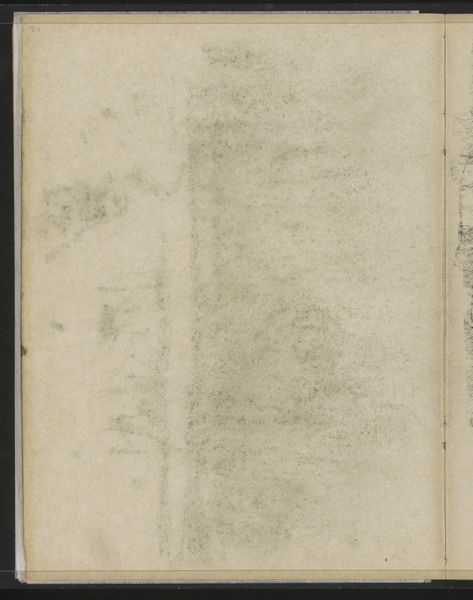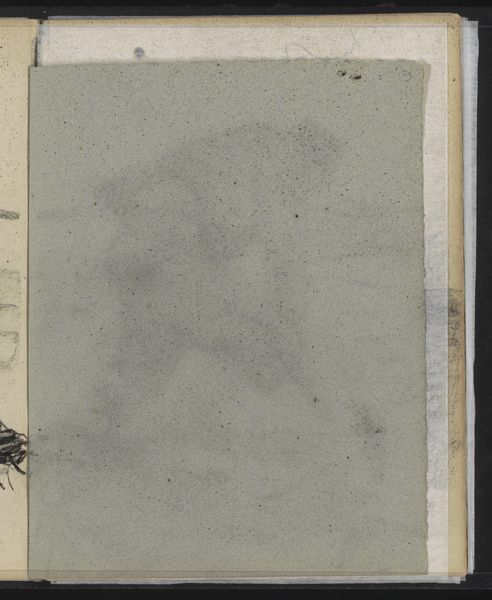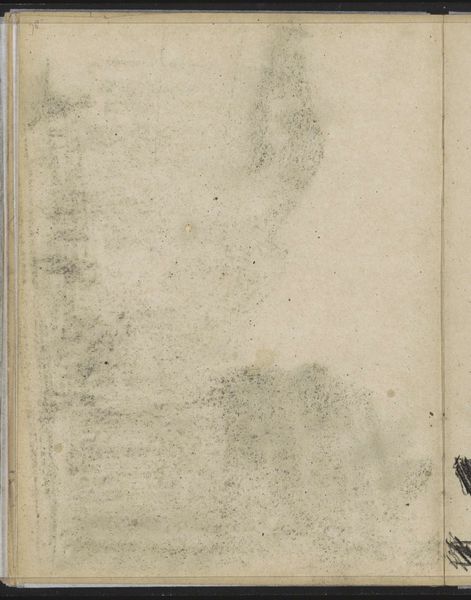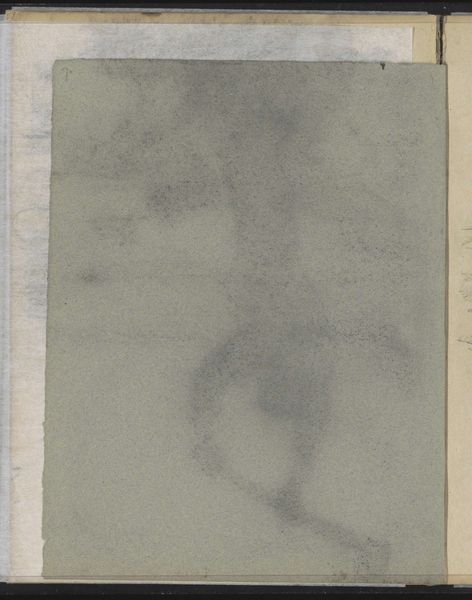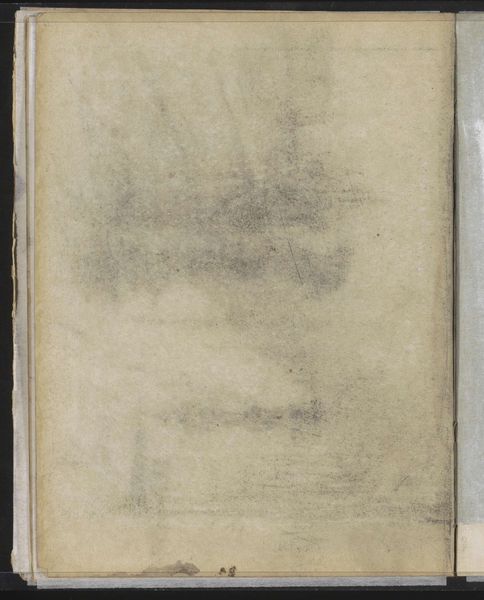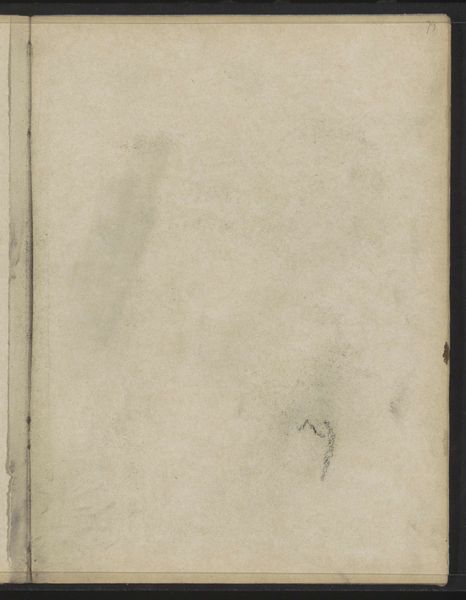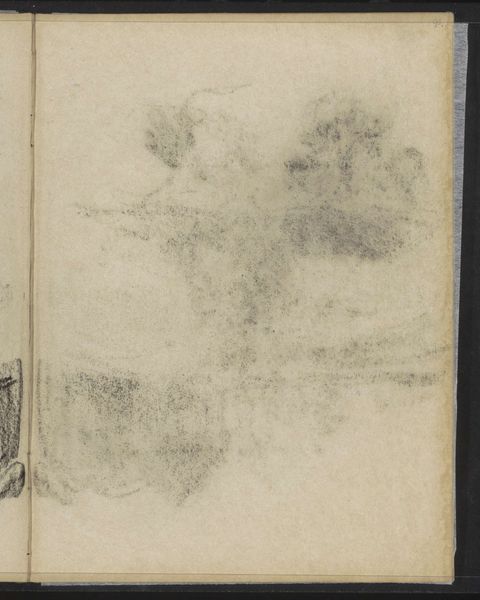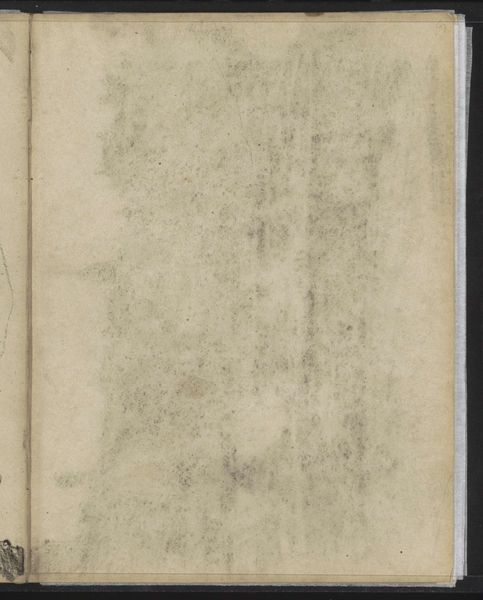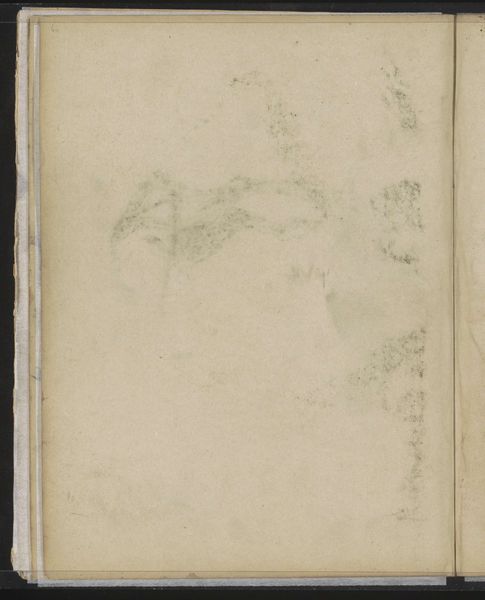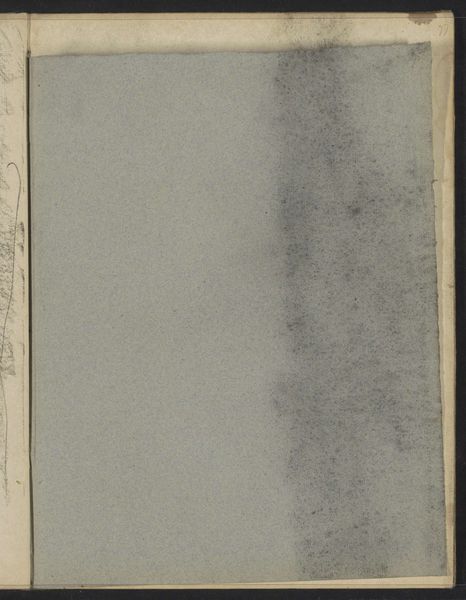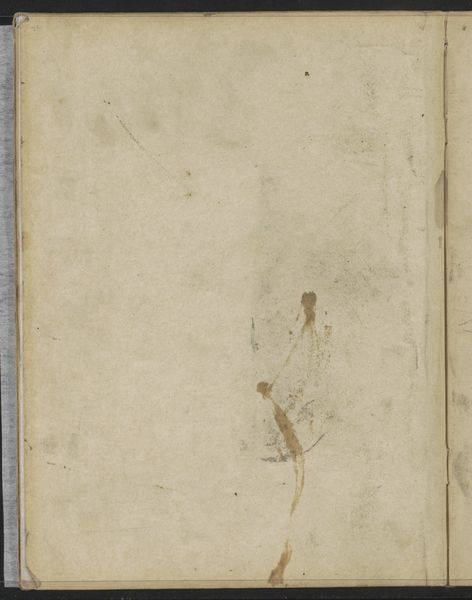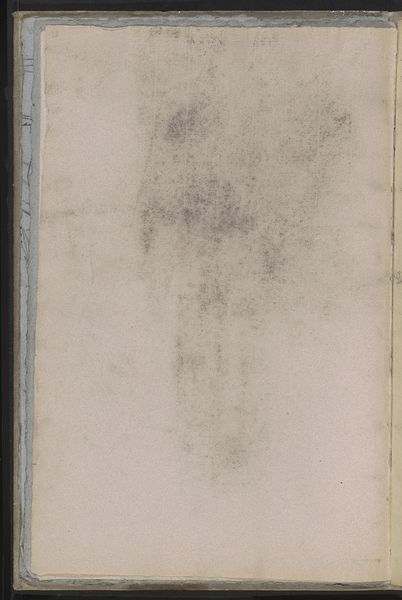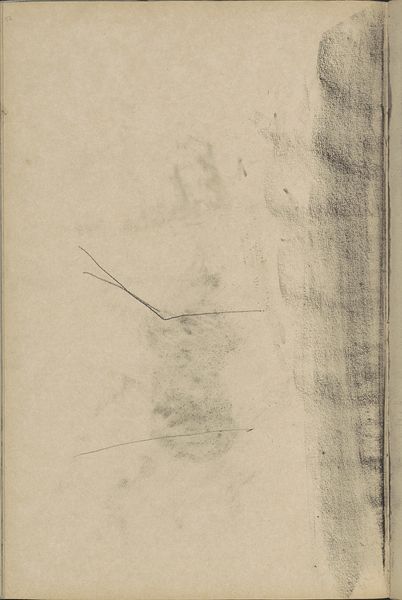
drawing, paper, pencil
#
drawing
#
aged paper
#
toned paper
#
homemade paper
#
ink paper printed
#
impressionism
#
sketch book
#
paper
#
personal sketchbook
#
fading type
#
pencil
#
sketchbook drawing
#
sketchbook art
Copyright: Rijks Museum: Open Domain
Curator: Here we have Willem Witsen’s "Abklatsch van de krijttekening op pagina 44", a work from circa 1884-1891 held here at the Rijksmuseum. Editor: Well, the most immediately striking aspect is the contrasting planes. That gray field dominating the right, juxtaposed with the subtle aged paper of the left. It feels almost like a stage. Curator: It’s more than that. Witsen, a contemporary of the Impressionists, here presents us not just with a drawing but also with its residue. 'Abklatsch' refers to a transfer or rubbing, suggesting an exploration of duplication and authenticity. The sketch book aspect shows Witsen using different papers that may or may not hold the image from one page to the next. Editor: I’m intrigued by the tonal shifts, how Witsen coaxed a subtle value range. The light and shadow interplay certainly hint at Impressionist strategies. And is that ink residue or smudging on the left-hand side, a shadow or even a vague ghostly presence of something lost or half-remembered? Curator: It also hints to me the artist's position in society at the time; they did not have fancy things. They were finding unique, efficient, resourceful ways to be artists. A sketchbook is more than just for planning paintings; it can also be a diary of the human experience during the artist's time. Editor: Fascinating. I hadn’t considered the resourcefulness embedded within the aesthetic. To me the lack of details forces my eye to wander into nothing. It does tell me so much about Witsen. Curator: Ultimately, this isn't merely about aesthetics but about class commentary using art. This speaks volumes about the socio-economic conditions framing Witsen's artistic production. It is very sad but an honest interpretation. Editor: Perhaps we can read those traces as absences and ghosts, those hints of societal barriers? But at its heart it’s a meditation on texture, tone, light, and form. Curator: I'm persuaded that we should always look past form to seek a greater reflection and consideration about culture.
Comments
No comments
Be the first to comment and join the conversation on the ultimate creative platform.
